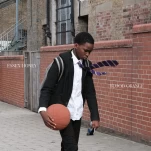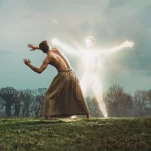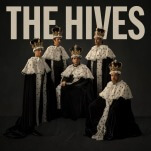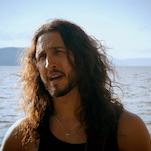deGeneration X: Diving 2,000 Feet Underwater
I just landed on Roatán Island in Honduras for a sanity-questioning adventure with maverick Karl Stanley. According to National Geographic in 2002, Stanley once broke into a police station to destroy parking tickets, and teen troubles at a reform school landed him in a New Jersey state mental hospital, which surprisingly had nothing to do with the submarine he started building at age 15. The week he graduated from college, the New Jersey native took C-BUG, his first sub, on its maiden dive. Early issues included leaks, blown gaskets and a cracked window at 600 feet that soaked a passenger with seawater. With his new submarine Idabel, Stanley runs unlicensed and uninsured passenger dives in Honduras, one of the few countries that would allow it. Stanley famously tells people their only insurance is that “I am going with you.” In other words, if you die, I die, too.
I booked the submarine-dive option that goes 2,000 feet underwater. My future wife, who joined me on the adventure, said, “We absolutely cannot tell my family what we are about to do.”
Through a series of emails, I scheduled the submarine dive for Thanksgiving weekend. Stanley’s Roatán Institute of Deepsea Exploration (RIDE) operates out of Roatán, the largest of the Bay Islands located off the Caribbean coast of Honduras. The Bay Islands are Bonacca Ridge peaks from the extensive Mesoamerican Barrier Reef that one National Geographic writer favorably compared to the Great Barrier Reef. Christopher Columbus, so the story goes, helped name Honduras—an Old Spanish word for “depths”—in part after the Cayman Trench that drops to more than 25,000 feet right off the shoreline. This steep ocean topography allows Idabel to depart from the dock in Half Moon Bay as opposed to needing a boat to take the sub out to sea.
We met Stanley for the first time at 10 a.m. on the day of our dive. At the docks, Idabel hung a few feet above the water right in front of Stanley’s residence. The bright yellow sub looked smaller than I had expected. When we arrived, a man shouted toward the house, and Stanley appeared on his white-picket balcony wearing a light brown shirt, shorts and no shoes. Speaking in Spanish, the man on the dock said something about Tarzan right as Stanley grabbed a metal bar and sailed over the water to the dock on a zipline.
“I’m sorry, but we have a bit of a problem,” the sub captain said. Apparently he left Idabel’s lights on overnight—or at least that’s how we interpreted his tech speak—and it did not have enough juice for the dive. Furthermore, he had German scientists arriving the next morning for a week of deep-sea research, so we only had one option: “We have to reschedule for tonight.”
On a normal day dive, the submarine enters perpetual darkness at around 1,800 feet. For us, darkness would now come much earlier, but it also meant we had a better chance of seeing strange marine life. Pre-gaming with tropical cocktails at sunset, we returned to the dock at night.
Stanley’s youthful antics clearly gave his family fits, but the doctors at the mental hospital realized he was crazy in a good way and quickly ended his unwarranted stay. In reality, this brilliant young man merely had an explorer’s spirit that led to extreme risks, and he epitomized this spirit as the submarines’ human guinea pig. On his own without passengers, he often pushed the limits even taking Idabel to 2,660 feet. Should he ever go too deep, the sub will implode to the size of a small metal ball.
-

-

-

-

-

-

-

-

-

-

-

-

-

-

-

-

-

-

-

-

-

-

-

-

-

-

-

-

-

-

-

-

-

-

-

-

-

-

-

-








































